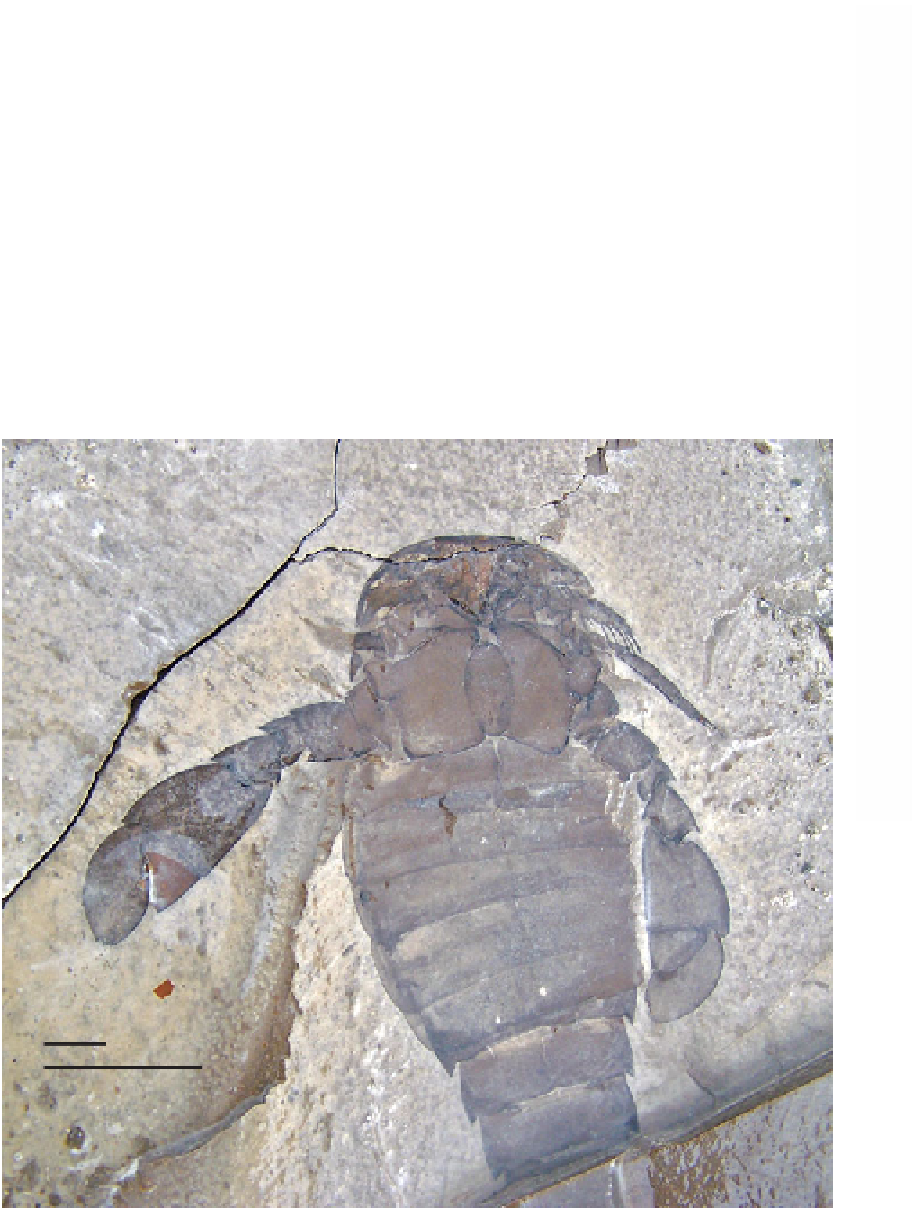Geoscience Reference
In-Depth Information
two parts: the anterior prosoma and the
posterior opisthosoma. The prosoma bears
a carapace with a pair of compound eyes
and six appendages. The first appendage is
the chelicera, which is usually small, but
can be greatly enlarged in the pterygotids.
The following three pairs of appendages
are usually spiny and used for food
capture, e.g. in
Eurypterus
, and increase in
size backwards but, in pterygotids, which
use their enlarged chelicerae for prey
capture, these appendages bear no spines.
The fifth appendage is usually leg-like in all
eurypterids, and the sixth is normally
adapted as a swimming paddle, although
it is leg-like in the stylonurids which
presumably walked rather than swam.
The posterior part of the body,
the opisthosoma is itself divided into
an anterior mesosoma of seven segments,
which bears gills beneath flaps on
the underneath, and a posterior metasoma
of five segments plus a telson which can
be a spine (e.g. in
Eurypterus
), a possible
stinger (e.g. in carcinosomatids), or a
flipper (in pterygotids).
70
gnathobasic teeth
surrounding mouth
spiny
appendages
metastoma
walking leg
coxa
coxa
swimming
paddle
sternite
1 cm
swimming
paddle
1 inch
70 Eurypterus lacustris, Williamsville Formation, Ridgemount Quarries, Ontario YPM.
Annotated to show the ventral morphology of eurypterids.





Search WWH ::

Custom Search